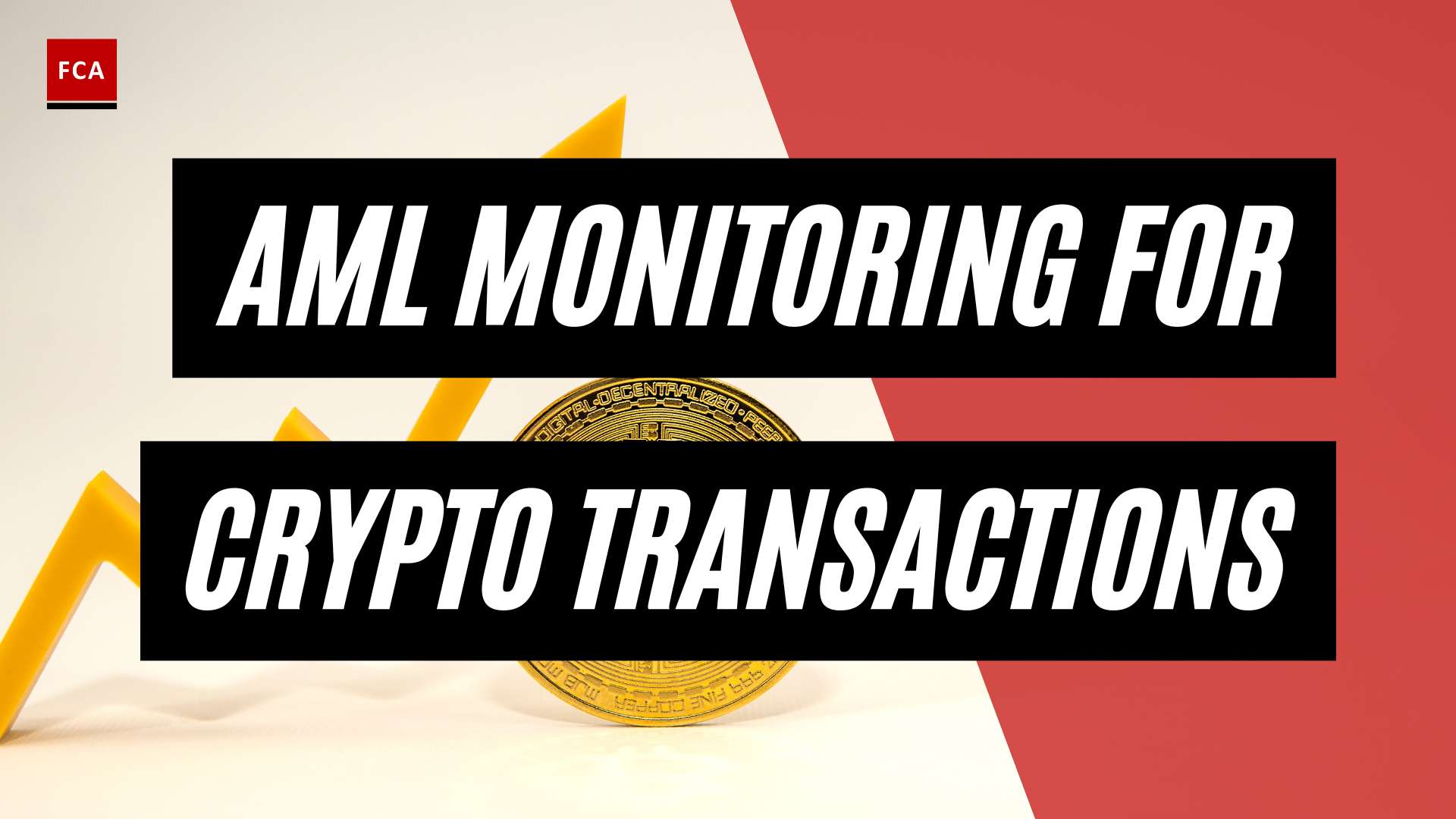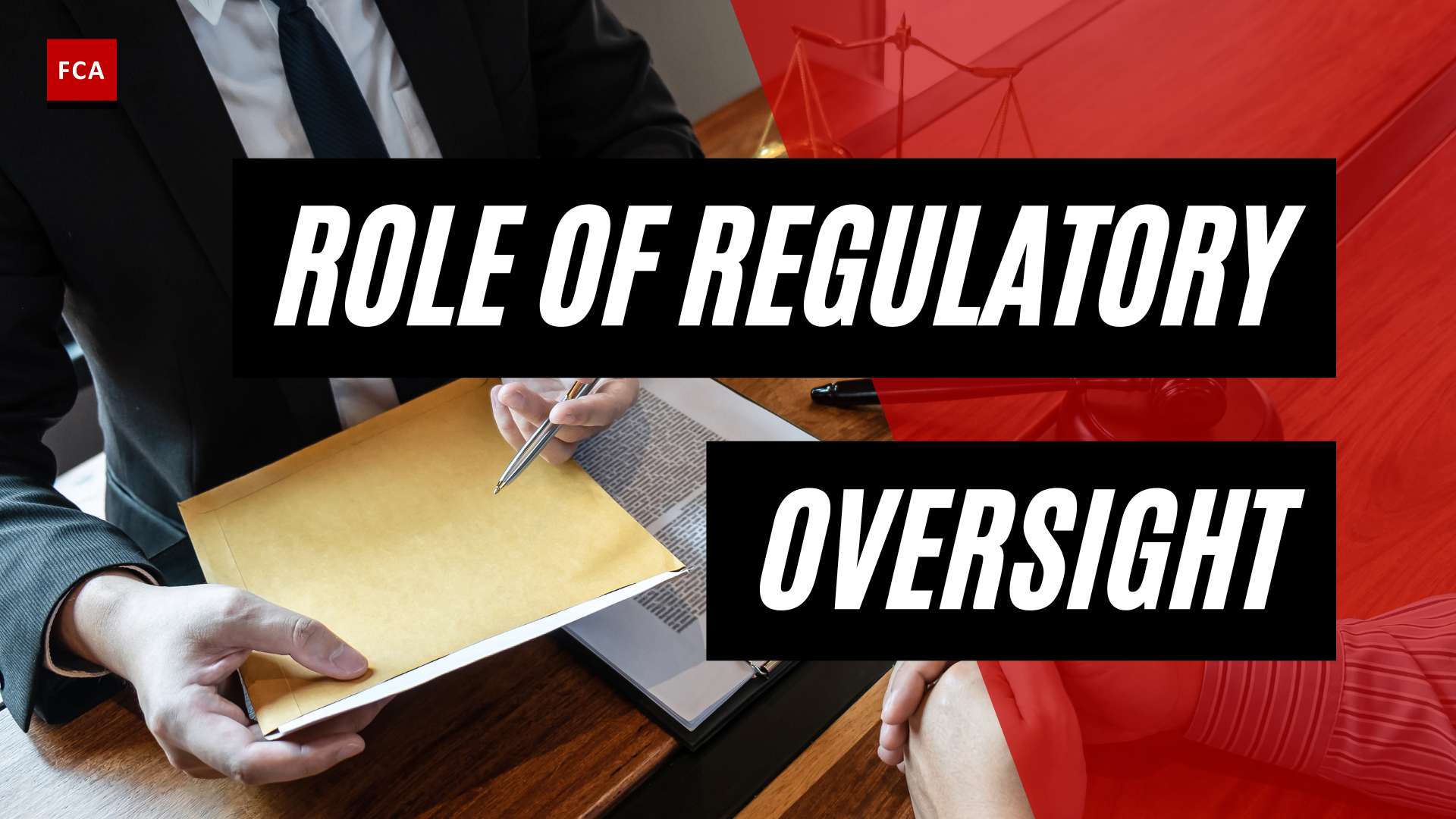Understanding Anti-Money Laundering (AML) Regulation
To safeguard against illicit transactions and protect the integrity of financial systems, Anti-Money Laundering (AML) regulations are in place. This section will provide an overview of AML regulation and highlight its importance in the context of digital currencies.
What is AML Regulation?
AML regulation refers to the set of laws and regulations designed to prevent money laundering, terrorist financing, and other financial crimes. Money laundering involves the process of making illegally obtained funds appear legitimate by disguising their illicit origin. It allows criminals to enjoy the proceeds of their illegal activities while evading detection and prosecution.
AML regulations aim to establish a robust framework that financial institutions and other relevant entities must adhere to in order to detect and prevent money laundering. These regulations require entities to implement risk-based procedures and internal controls to identify and report suspicious activities that may be indicative of money laundering or terrorist financing.
In the context of digital currencies, AML regulation extends to cryptocurrency exchanges, wallet providers, and other entities involved in the digital asset ecosystem. The rapid growth of digital currencies has presented new challenges, as criminals have sought to exploit the anonymous and global nature of cryptocurrencies for illicit purposes. AML regulation in this space is crucial to mitigate these risks and ensure the integrity of digital financial transactions.
Importance of AML Regulation in Digital Currencies
Cryptocurrencies have gained popularity not only among legitimate users but also among criminals due to their confidential nature and global reach. This presents significant challenges for law enforcement agencies worldwide in tracking and investigating illegal transactions (Financial Crime Academy). Criminals often use mixing services or tumblers to obfuscate the source of funds, making it more difficult to trace the illicit origin of the money (Financial Crime Academy).
Decentralized exchanges, which are less regulated and offer more anonymity compared to their centralized counterparts, are frequently exploited by criminals to facilitate money laundering activities using digital currencies (Financial Crime Academy). Additionally, privacy coins such as Monero, Zcash, and Dash provide enhanced anonymity features that make tracking and identifying illicit transactions more challenging for authorities (Financial Crime Academy).
AML regulation in digital currencies plays a crucial role in combating money laundering and other financial crimes. By implementing effective AML measures, such as cryptocurrency transaction monitoring, KYC requirements, and AML policies, entities operating in the digital asset space can contribute to a safer and more secure financial environment. These regulations help detect and deter illicit activities, protect the integrity of the financial system, and promote trust among users and investors.
In the next sections, we will explore the challenges faced in AML regulation for digital currencies, the measures employed to combat money laundering, notable cases and scandals in cryptocurrency money laundering, AML compliance in digital asset service providers (DASPs), and the role of sanctions and government efforts in addressing these issues.
Challenges in AML Regulation for Digital Currencies
As the use of digital currencies continues to grow, so do the challenges in implementing effective anti-money laundering (AML) regulation. The unique characteristics of cryptocurrencies present obstacles for authorities and regulatory bodies in their efforts to combat money laundering. Here are three significant challenges in AML regulation for digital currencies:
Anonymity and Global Reach of Cryptocurrencies
One of the key challenges in AML regulation for digital currencies is the inherent anonymity they offer. Cryptocurrencies, such as Bitcoin and Ethereum, allow users to conduct transactions without revealing their true identities. This confidentiality makes it difficult for law enforcement agencies to track and trace illicit transactions, hindering their ability to identify and prevent money laundering activities.
Moreover, the global reach of cryptocurrencies adds another layer of complexity. Transactions can occur across borders quickly and seamlessly, making it challenging for authorities to coordinate efforts and enforce AML regulations effectively. Criminals exploit this feature to move funds across jurisdictions, evading detection and complicating the investigation process.
Exploitation of Decentralized Exchanges
Decentralized exchanges (DEXs) present another challenge in AML regulation for digital currencies. DEXs operate without a central authority, allowing users to trade cryptocurrencies directly with one another. Compared to centralized exchanges, DEXs often have less stringent regulatory requirements and offer increased anonymity.
Criminals take advantage of these characteristics to facilitate money laundering activities using digital currencies. By utilizing DEXs, they can obscure the source and destination of funds, making it harder for authorities to identify suspicious transactions. The lack of regulatory oversight and the absence of user identification requirements on DEXs make them attractive platforms for money laundering.
Privacy Coins and Their Implications
Privacy coins, such as Monero, Zcash, and Dash, pose a significant challenge for AML regulation in digital currencies. These cryptocurrencies incorporate enhanced privacy features that make tracking and identifying illicit transactions more difficult for authorities. Privacy coins utilize advanced encryption techniques and obfuscation methods to conceal transaction details, such as the sender, recipient, and transaction amount.
The increased anonymity provided by privacy coins enables criminals to conduct illicit activities without leaving a trace. It becomes challenging for law enforcement agencies to gather the necessary evidence and establish a clear audit trail. The use of privacy coins complicates AML efforts as it requires specialized tools and techniques to investigate and monitor transactions involving these cryptocurrencies.
Overcoming these challenges in AML regulation for digital currencies requires a multi-faceted approach. Regulators, law enforcement agencies, and industry participants must collaborate to develop robust frameworks and technologies that address the anonymity and global reach of cryptocurrencies. Enhanced regulations, improved transaction monitoring systems, and international cooperation are crucial in mitigating the risks associated with money laundering in the digital currency space.
By understanding and addressing these challenges, authorities can work towards a more effective AML regulatory environment for digital currencies, promoting transparency, integrity, and the prevention of illicit financial activities.
Measures to Combat Money Laundering in Digital Currencies
To effectively combat money laundering in the realm of digital currencies, several measures have been implemented. These measures involve the use of advanced technologies, collaboration, and regulatory frameworks. Let’s explore three key approaches to combating money laundering in digital currencies: blockchain analysis and transaction tracking, the role of machine learning and artificial intelligence, and collaboration and regulatory frameworks.
Blockchain Analysis and Transaction Tracking
Blockchain analysis plays a crucial role in monitoring cryptocurrency transactions and detecting suspicious activities. By analyzing the blockchain, patterns and anomalies can be identified, allowing for the tracking of money flow and the identification of parties involved in potentially illicit activities. Common patterns that raise red flags include large money movements, multiple transactions to a single address, and dealings with known criminal entities.
By employing blockchain analysis and transaction tracking techniques, financial institutions and regulatory bodies can gain insights into the flow of funds, helping to identify and prevent money laundering activities in digital currencies. This analysis is an essential tool in the fight against financial crimes in the digital realm.
Role of Machine Learning and Artificial Intelligence
Machine learning and artificial intelligence (AI) are increasingly utilized in the monitoring of cryptocurrency transactions. The vast amount of data involved in digital currency transactions makes it challenging for humans alone to identify suspicious activities. Machine learning algorithms can analyze these data sets, detect patterns, and flag potentially illicit transactions.
Machine learning and AI technologies continuously evolve to stay ahead of new threats. As criminals adapt their methods, these technologies play a crucial role in detecting money laundering activities and other financial crimes in digital currencies. Their ability to analyze vast amounts of data in real-time enhances the effectiveness of anti-money laundering (AML) efforts (Sanction Scanner).
Collaboration and Regulatory Frameworks
Effectively combating money laundering in digital currencies requires collaboration between financial institutions, technology providers, regulators, and law enforcement agencies. Cooperation and information sharing are vital to developing effective AML strategies. By working together, these entities can establish standards and best practices, share intelligence, and enhance regulatory frameworks.
Financial institutions are investing significantly in AML compliance measures to tackle illicit financial activities in digital currencies. Regulatory expectations from authorities worldwide are increasing, necessitating organizations to enhance their AML controls to prevent financial crimes (KPMG). Collaboration between stakeholders is essential to ensure consistent and effective implementation of AML regulations for digital currencies.
Regulatory frameworks are continuously evolving to address the unique challenges posed by digital currencies. Governments and international organizations are working to enhance regulations and develop new tools to combat money laundering activities involving digital assets. This ongoing effort aims to safeguard global financial systems against the misuse of digital currencies for illicit purposes, including the evasion of sanctions.
By combining advanced technologies, collaboration, and regulatory frameworks, efforts are underway to combat money laundering in digital currencies. These measures aim to protect the integrity of financial systems, enhance transparency, and mitigate the risks associated with illicit financial activities in the digital realm.
Notable Cases and Scandals in Cryptocurrency Money Laundering
The rise of digital currencies has brought about new challenges and risks, including the potential for illicit activities. Several notable cases and scandals have highlighted the need for robust anti-money laundering (AML) measures in the realm of cryptocurrencies. Let’s explore some of these cases:
Plus Token Ponzi Scheme
The Plus Token Ponzi Scheme, which came to a halt in June 2019, stands as one of the largest cryptocurrency scams to date. This scheme generated a staggering $2.9 billion, covering 64 percent of the volume of cryptocurrency crimes. The scheme attracted investors, particularly from Korea and China, by promising high returns of between 9 percent and 18 percent monthly. The collapse of Plus Token had significant implications, causing Bitcoin prices to drop drastically in 2019 (Sanction Scanner).
KuCoin Hack and Recovery
In September 2020, KuCoin, a prominent cryptocurrency exchange, suffered a high-profile hacking incident resulting in the cyber theft of at least $150 million in cryptocurrency. However, the response to this breach was notable. The CEO and co-founder of KuCoin, Johnny Lyu, announced that 84% of the stolen funds were successfully recovered. This recovery effort demonstrated the importance of swift action and collaboration within the cryptocurrency community in combatting money laundering and recovering stolen assets (Sanction Scanner).
Thodex Scandal and Irrevocable Stolen Funds
The Thodex scandal unfolded in Turkey, where the CEO of the cryptocurrency exchange platform Thodex fled the country after allegedly swindling $2 billion from 391,000 investors. This incident left thousands of Turkish users as victims, and the stolen funds were declared “irrevocable” through the legal process. The Thodex scandal underscores the challenges faced by regulatory authorities in addressing cryptocurrency-related crimes and protecting investors from fraudulent activities (Sanction Scanner).
Silk Road and Dark Web Marketplace
Silk Road, a notorious dark web marketplace, gained notoriety for facilitating illegal activities such as drug trafficking, money laundering, and more. Ross Ulbricht, the mastermind behind Silk Road, was apprehended in 2013. The platform allowed users to transact in cryptocurrencies, making it difficult to trace and control the flow of funds. This case highlighted the need for effective AML regulations and enforcement in the realm of digital currencies.
BitMEX Non-Compliance Allegations
BitMEX, a prominent cryptocurrency derivatives exchange, faced allegations of non-compliance with U.S. law in 2020. This led to charges against its executives, making BitMEX the first cryptocurrency exchange indicted by the federal government for breaching anti-money laundering laws. The case shed light on the importance of regulatory compliance and the need for robust AML measures in the cryptocurrency industry (Sanction Scanner).
These notable cases and scandals serve as reminders of the vulnerabilities within the cryptocurrency ecosystem and the need for stringent AML regulations. By learning from these incidents, policymakers, regulators, and industry participants can work collaboratively to develop effective measures to combat money laundering and protect the integrity of digital currencies.
AML Compliance in Digital Asset Service Providers (DASPs)
To effectively combat money laundering in digital currencies, it is crucial for digital asset service providers (DASPs) to implement robust anti-money laundering (AML) compliance measures. DASPs, including cryptocurrency exchanges and other platforms facilitating the exchange or custody of digital assets, play a vital role in preventing illicit financial activities. Here are key aspects of AML compliance in DASPs:
Know Your Customer (KYC) and Customer Due Diligence (CDD)
KYC and CDD policies are essential components of AML compliance in DASPs. These policies require DASPs to verify the identities of their customers, monitor transactions, and report suspicious activities. By implementing effective KYC and CDD procedures, DASPs can enhance their ability to identify and prevent money laundering attempts.
KYC procedures involve collecting and verifying customer information, such as identification documents, proof of address, and other relevant details. This helps ensure that DASPs have accurate information about their customers and can assess the potential risks associated with their transactions. KYC requirements may vary across jurisdictions, and DASPs must comply with the specific regulatory guidance applicable to their operations.
CDD goes beyond KYC and involves ongoing monitoring of customer transactions and activities. DASPs should have systems in place to detect unusual or suspicious patterns of behavior, such as high-value transactions or frequent transfers to and from high-risk jurisdictions. Monitoring customer activities helps DASPs identify potential money laundering activities and report them to the relevant authorities.
Regulatory Guidance for Digital Currency Exchanges
Regulatory authorities around the world have been actively developing guidance and regulations for digital currency exchanges to ensure AML compliance. These regulations outline the obligations and responsibilities of DASPs in preventing money laundering and terrorist financing.
Regulatory guidance typically includes requirements for KYC and CDD, transaction monitoring, record-keeping, and reporting suspicious activities. DASPs must stay updated with the evolving regulatory landscape and ensure their operations align with the specific AML requirements in their jurisdiction.
Monitoring Suspicious Activities and Reporting
Monitoring customer transactions and activities is crucial for detecting suspicious patterns that may indicate money laundering attempts. DASPs should have robust transaction monitoring systems in place to identify unusual or high-risk transactions and flag them for further investigation.
When suspicious activities are identified, DASPs have a legal obligation to report them to the appropriate authorities. Reporting mechanisms and procedures vary across jurisdictions, but DASPs must comply with the reporting requirements defined by regulatory bodies. Timely reporting of suspicious activities enables law enforcement agencies to investigate and take necessary action to prevent money laundering in digital currencies.
By implementing strong KYC and CDD procedures, adhering to regulatory guidance, and maintaining effective transaction monitoring systems, DASPs can play a crucial role in preventing money laundering in the digital asset ecosystem. Collaboration between DASPs, regulators, and law enforcement agencies is essential to develop and improve AML strategies, ensuring the integrity of digital currencies and the financial system as a whole.
Combating Money Laundering and Terrorist Financing
As digital currencies continue to gain popularity, concerns about the criminal use of virtual assets have become a top priority for anti-money laundering (AML) efforts. The unique characteristics of digital currencies present several challenges in combating money laundering and terrorist financing. This section will explore these concerns and challenges, including the criminal use of virtual assets, the challenges of anonymity and lack of transparency, and the complexities of cross-border transactions and jurisdictional issues.
Concerns About Criminal Use of Virtual Assets
The growing use of virtual assets for terrorist financing and money laundering is a significant concern for the AML community. Criminals and terrorist organizations have exploited the global reach of digital currencies to raise funds through online crowdfunding campaigns, social media platforms, and the use of virtual assets. This necessitates enhanced vigilance and monitoring to detect and prevent illicit financial flows in the digital currency space (FATF).
Challenges of Anonymity and Lack of Transparency
One of the primary challenges in combating money laundering and terrorist financing in digital currencies is the inherent anonymity and lack of transparency associated with virtual assets. Virtual asset service providers (VASPs) often struggle to identify the beneficial owner and the underlying purpose of transactions, making customer due diligence more challenging. This lack of transparency enables criminals to exploit the digital currency space for illicit activities without being easily detected (FATF).
Cross-Border Transactions and Jurisdictional Issues
Digital currencies offer the ability to conduct transactions across borders with ease, posing significant challenges for authorities in tracking and regulating these transactions. The global nature of virtual assets complicates AML efforts, as different jurisdictions may have varying regulations and enforcement mechanisms. The lack of harmonization in AML regulations for digital currencies creates gaps that criminals can exploit to launder money or finance terrorism through virtual assets. The need for international cooperation and coordination is crucial to effectively combat cross-border money laundering and terrorist financing in the digital currency space (FATF).
As criminals continue to adapt their money laundering techniques to exploit the unique features of digital currencies, regulators and industry stakeholders must work together to develop robust AML frameworks, enhance transparency, and strengthen international cooperation. By addressing concerns about criminal use, anonymity and lack of transparency, and cross-border transactions, the AML community can better combat money laundering and terrorist financing in the evolving landscape of digital currencies.
The Role of Sanctions and Government Efforts
In the realm of anti-money laundering (AML) regulation for digital currencies, the role of sanctions and government efforts is crucial in combating illicit transactions. Governments and regulatory bodies are actively working to address the risks posed by digital assets in sanctions evasion and money laundering.
Impact of Digital Assets on Sanctions Evasion
Digital assets, such as cryptocurrencies, have the potential to be used for sanctions evasion. By leveraging the decentralized and borderless nature of digital currencies, sanctioned entities can attempt to hide their transactions and generate funds from cybercrime and illicit activities. This poses a challenge to the effectiveness of sanctions imposed by governments, impacting the value of a country’s currency and its ability to fund various projects (U.S. Government Accountability Office).
To address this issue, government agencies around the world are actively monitoring and investigating cases of digital assets being used for sanctions evasion. By taking action against individuals and entities involved in such activities, governments aim to maintain the integrity of their sanctions frameworks and prevent the misuse of digital assets.
Financial Settlements and Consequences
One way in which governments enforce AML regulations in the digital asset industry is through financial settlements and consequences for non-compliance. Cryptocurrency exchanges and other digital asset service providers are subject to regulatory scrutiny, and violations of anti-money laundering and sanctions laws can lead to significant penalties.
For example, in November 2023, the U.S. Treasury announced a financial settlement of nearly $4.4 billion with Binance Holdings Ltd. and its affiliates for violations of U.S. AML and sanctions laws. This serves as a clear indication of the consequences faced by the digital asset industry for their involvement in illicit transactions (U.S. Government Accountability Office).
Financial settlements and penalties not only act as deterrents for non-compliance but also send a message that governments are committed to ensuring the integrity of the financial system and preventing illicit activities facilitated by digital assets.
International Cooperation and Enhanced Investigations
Given the global nature of digital assets, international cooperation and enhanced investigations are vital components in the fight against money laundering and sanctions evasion. Government agencies, such as the Departments of Justice and Treasury, collaborate with international organizations and partners to enhance investigative capacity and implement AML standards.
By sharing information, intelligence, and best practices, these collaborations aim to safeguard the global financial system against the misuse of digital assets for illicit purposes. International cooperation helps in identifying and disrupting money laundering networks, enabling authorities to take appropriate actions against individuals and organizations involved in illicit transactions (U.S. Government Accountability Office).
As risks associated with digital assets and sanctions evasion continue to evolve, governments and regulatory bodies strive to stay ahead of emerging challenges. Advancements in tracing transactions and identifying illicit actors are being explored to mitigate the risks posed by digital assets to the effectiveness of sanctions in the future.
The role of sanctions and government efforts in AML regulation for digital currencies is pivotal in maintaining the integrity of the financial system and preventing illicit activities. Through proactive measures, financial settlements, international cooperation, and enhanced investigations, governments aim to combat money laundering, terrorist financing, and the misuse of digital assets for sanctions evasion.
Techniques and Technologies for AML in Cryptocurrency Transactions
To combat money laundering in the realm of cryptocurrencies, various techniques and technologies have emerged. These advancements aim to address the unique challenges posed by digital currencies and ensure effective anti-money laundering (AML) measures.
Challenges in Establishing Consistent Regulations
Establishing consistent AML regulations for cryptocurrencies is a significant challenge. The lack of a standardized regulatory framework makes it harder to combat money laundering and other illicit activities in the digital currency space. Criminals can exploit this regulatory gap, necessitating continuous efforts to enhance regulations and close loopholes. The Financial Action Task Force (FATF) has been actively working to establish global standards and guidelines to address these challenges.
Blockchain Analysis and Money Flow Tracking
Blockchain analysis plays a vital role in monitoring cryptocurrency transactions. By analyzing the public ledger of transactions, it becomes possible to track the flow of money and identify parties involved in suspicious activities. Blockchain analysis helps detect patterns such as large money movements, multiple transactions to a single address, and dealings with known criminal entities. This enables authorities to take necessary actions to prevent money laundering. Companies specializing in blockchain analysis provide valuable tools and services to enhance AML efforts in the cryptocurrency space (Sanction Scanner).
Machine Learning and AI in Transaction Monitoring
Machine learning and artificial intelligence (AI) are increasingly employed in transaction monitoring for cryptocurrencies. These technologies analyze vast amounts of data, enabling the identification of patterns and anomalies that may be challenging for humans to detect. Machine learning algorithms can learn from historical data and adapt to evolving money laundering techniques, improving the effectiveness of AML measures. AI-powered transaction monitoring systems help financial institutions and regulatory bodies stay ahead of new threats and enhance their ability to detect and prevent illicit activities in the cryptocurrency space (Sanction Scanner).
The use of machine learning and AI is particularly valuable in identifying suspicious transactions, flagging potential risks, and reducing false positives. These technologies enhance the efficiency and accuracy of AML efforts, ultimately contributing to a more robust and effective system for combating money laundering in digital currencies.
By leveraging blockchain analysis, machine learning, and AI technologies, regulators, financial institutions, and cryptocurrency service providers can strengthen their AML capabilities. These techniques and technologies enable the identification of suspicious activities, tracking of money flows, and timely intervention to prevent money laundering and other illicit financial activities within the cryptocurrency ecosystem. However, it is crucial to continually adapt and enhance these techniques as criminals also evolve their methods to evade detection.
For more information on AML compliance in cryptocurrencies and related topics, you can refer to our articles on cryptocurrency AML compliance, cryptocurrency transaction monitoring, and cryptocurrency KYC requirements.
Techniques and Technologies for AML in Cryptocurrency Transactions
Effectively combating money laundering in digital currencies requires the implementation of various techniques and technologies. The unique characteristics of cryptocurrencies, such as their anonymity and global reach, present challenges for traditional anti-money laundering (AML) regulation. In this section, we will explore some of the key techniques and technologies used to address these challenges.
Challenges in Establishing Consistent Regulations
Establishing consistent AML regulations for cryptocurrencies is a complex task. The decentralized nature of digital currencies and the absence of a central authority make it challenging to enforce uniform regulations globally. Jurisdictional issues further complicate the process, as different countries may have varying regulatory frameworks and interpretations of AML requirements.
To address these challenges, international cooperation and collaboration among regulatory bodies, financial institutions, and technology providers are essential. Sharing best practices, insights, and information can help create a more cohesive and comprehensive approach to AML regulation in the digital currency space.
Blockchain Analysis and Money Flow Tracking
Blockchain analysis plays a crucial role in detecting and preventing money laundering in digital currencies. The transparent nature of blockchain technology allows transactions to be recorded and verified on a public ledger. By analyzing blockchain data, authorities can trace the flow of funds and identify suspicious transactions.
Sophisticated tools and techniques are employed to analyze blockchain data and identify patterns that may indicate money laundering activities. These tools can help identify addresses involved in illicit transactions, track the movement of funds across different wallets, and detect suspicious behaviors, such as frequent transfers or mixing services.
Machine Learning and AI in Transaction Monitoring
Machine learning and artificial intelligence (AI) are increasingly being utilized in AML transaction monitoring for digital currencies. These technologies can analyze vast amounts of data, detect patterns, and identify anomalies that may indicate suspicious activities.
By training machine learning models on historical transaction data, these systems can learn to recognize patterns associated with money laundering and flag potentially illicit transactions in real-time. The continuous learning and adaptation capabilities of machine learning algorithms make them valuable tools in the fight against money laundering in digital currencies.
Collaboration and Regulatory Frameworks
Collaboration between financial institutions, technology providers, regulators, and law enforcement agencies is crucial in developing effective AML strategies for combating financial crimes in digital currencies. Sharing information and intelligence can help identify emerging threats and enhance the collective ability to detect and prevent money laundering activities.
Regulatory bodies play a significant role in establishing and enforcing AML regulations for cryptocurrencies. They provide guidance and frameworks for financial institutions and digital currency exchanges to follow. Adhering to these regulations is crucial to ensure compliance and mitigate the risks associated with money laundering.
It’s important to note that the techniques and technologies mentioned here are constantly evolving as criminals find new ways to exploit digital currencies. As the landscape continues to evolve, regulatory bodies and industry stakeholders must remain vigilant and adapt their AML strategies to stay ahead of emerging risks.
By leveraging blockchain analysis, machine learning, and AI, in conjunction with collaboration and robust regulatory frameworks, the fight against money laundering in digital currencies can be strengthened. However, it is an ongoing battle that requires continuous innovation and collaboration to stay one step ahead of criminals in the ever-evolving world of digital finance.








